Container gardens are perfect for classrooms, gardens with kids, and urban settings. There are lots of veggies well-suited to container vegetable gardening. Read on to discover the best varieties of vegetables for growing in containers and tips for growing your own food in your small space garden!
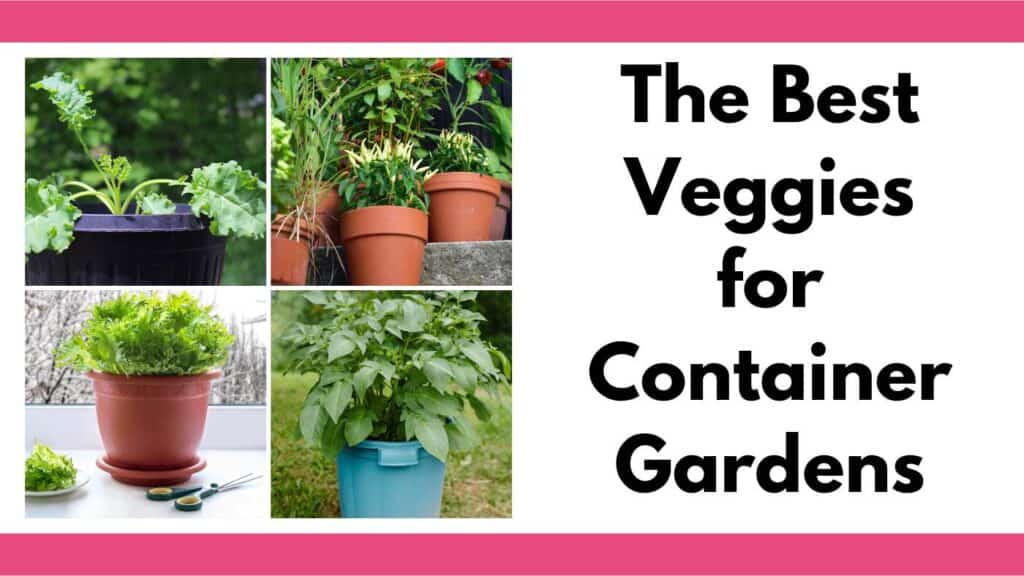
This post may include affiliate links which means I may earn a commission on qualifying purchases at no additional cost to you.
If you're planning a gardening theme for your kids or classroom, be sure to grab these free printables to go along with your theme:
- Free printable garden matching game
- Free printable garden planner
- Free printable garden planner stickers
- Spring garden gnome dot marker pages
Table of Contents
Best Vegetables for Container Gardening
Container plants are more prone to drying out than plants in the ground. It's important to watch them closely, especially in hot weather, and provide them with plenty of water.
Container plants also don't have the advantage of being exposed to local indigenous soil microbes. Using an inoculant, such as mycorrhizal fungi with plants that can partner with fungi, can help ensure you have strong, healthy plants. Mycorrhizal fungi help plants produce larger harvests while using less water. Since I've been using Myco Blisswith all plants that can partner with microbes. Skip the Jiffy peat pellets and use inoculated seed starting mix or potting soil when you start your seedlings this year. You'll be amazed, too.
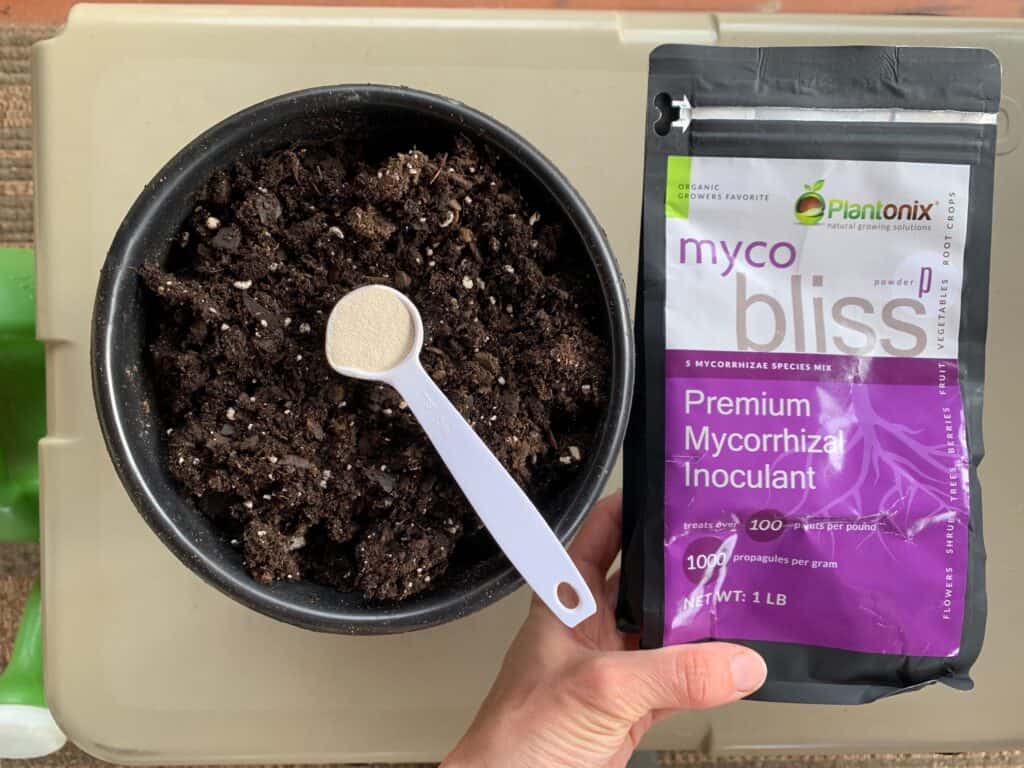
- 100% organic and sustainable plant inoculant.
- Improves nutrient uptake, efficiency, and availability.
- Helps plants absorb more water and nutrients.
Lettuce & Other Leafy Vegetables
Leafy greens are some of the easiest vegetables to grow in containers. They don’t take up much space and can be harvested in as little as a month or two. Most grow best in the cool weather of spring and fall, so plan your planting accordingly.
Lettuce is a great example of a green suited to pots. It can go in sun or part shade and harvested as soon as the leaves are big enough to eat. You can also mix in other salad greens like spinach, arugula, endive, etc. Lettuce is a fantastic choice if you don't get full sun. It can grow with as little as 6 hours of sunlight. I have an entire post on growing lettuce in containers you can read for more information about this easy to grow veggie.
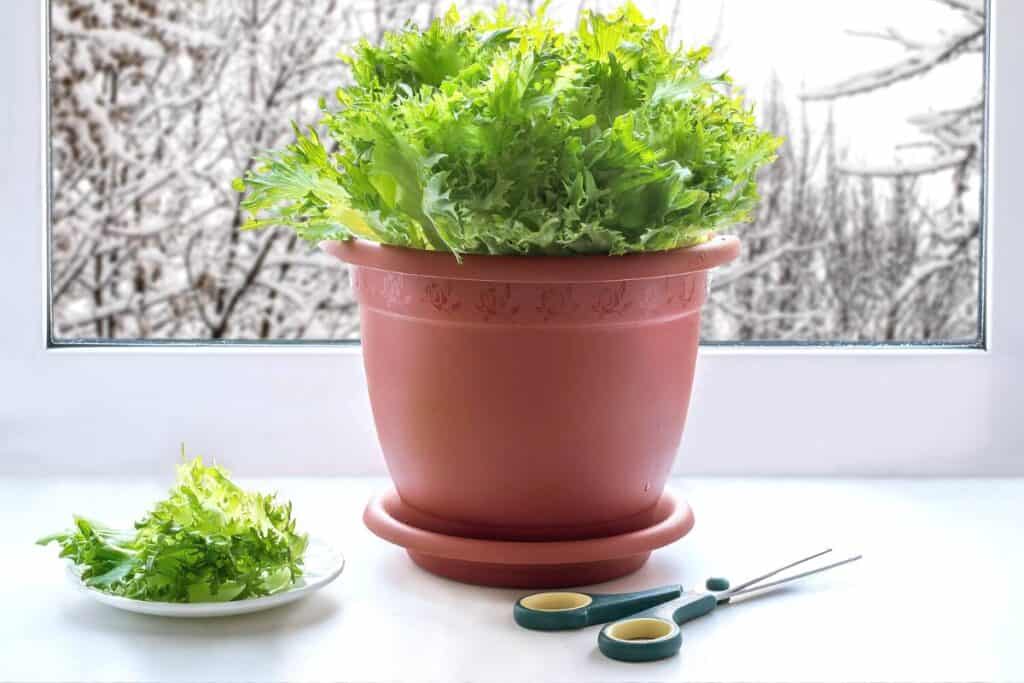
To maximize your container garden, look for faster-growing, leaf lettuce varieties. Some large head lettuces, like Romaine, take a relatively long time to mature. When you select a faster-growing loose leaf variety, you can make regular, smaller harvests for several weeks.
Lettuces can grow in long, shallow pots. You can also plant in window boxes. Any variety will do, but for a more decorative look, try a mesclun salad mix or a combination of green and red lettuces.
Kale and Swiss chard are excellent for containers as well. They do grow larger than other greens, so you can either harvest them as a baby green or use a larger pot. Brassicas and Swiss chard are the only plants featured in this post that do not partner with fungi, so don't inoculate your kale.
Kale does need a larger container. For a big plant, chose a 5 gallon grow bag (or larger) with just one or two kale plants.
Asian greens, such as mizuna and mustard, are also great candidates for container gardening.
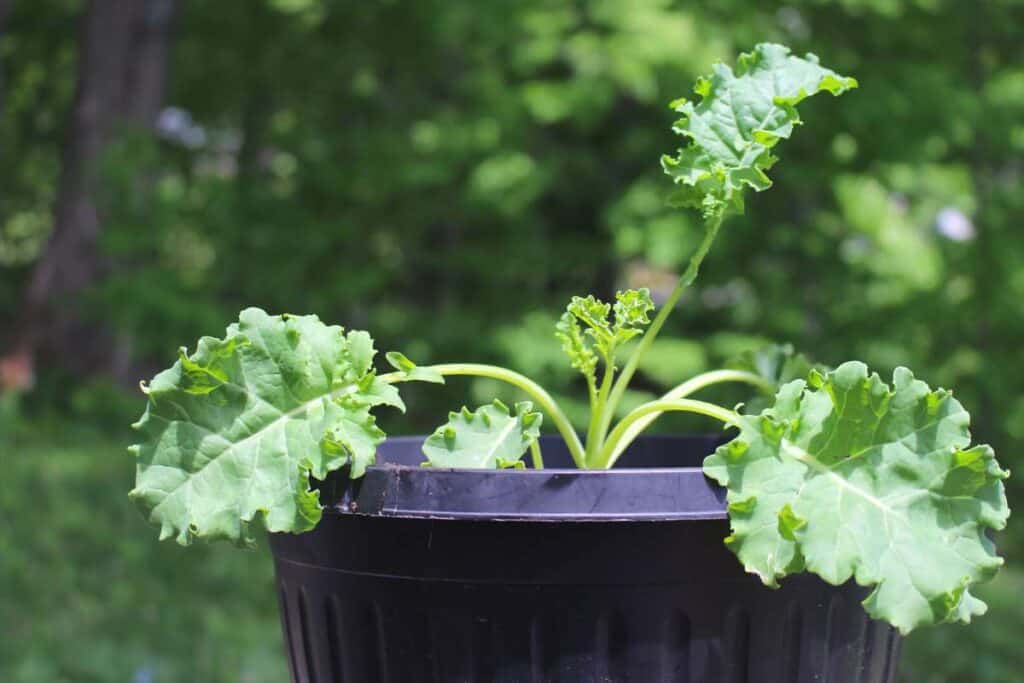
Container Garden Tomatoes
Tomatoes are one of the most popular summer vegetables and adapt very well to container growing. They usually need some kind of support system, though, so plan to get a tomato cage or a sturdy trellis for each plant.
Tomatoes are heat-loving plants and shouldn’t go outside until temperatures are consistently above 60°F. Either start seeds indoors 6-8 weeks before your last frost date or buy seedlings at a nursery to make sure you’ll have ripe fruit before the end of the season.
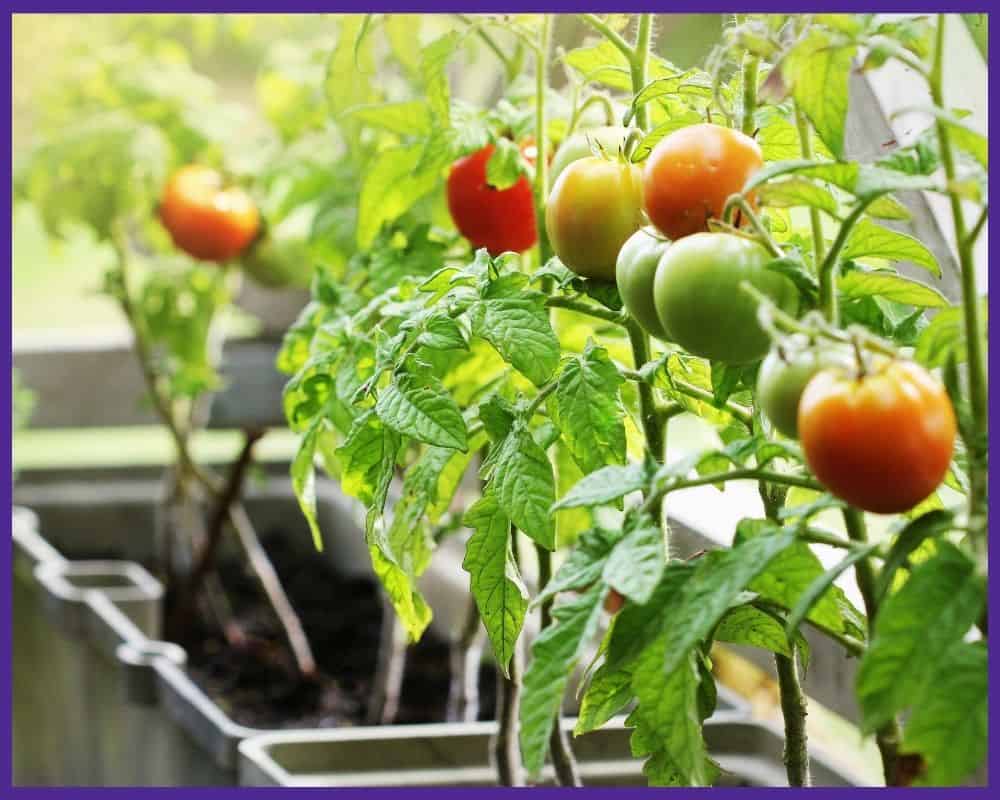
Any variety of tomato can be grown in a pot, but cherry tomatoes and compact, bush varieties will do the best. Determinate tomatoes, which stop growing upwards when the fruit ripens, are easier to support in pots than indeterminate tomatoes, which continue to grow taller indefinitely.
Many seedlings available at "big box" style stores are for indeterminate plants with large tomatoes. You'll probably have better luck looking for seeds from specialty retailers who sell less common varieties. One of my favorite for growing containers is Tiny Tim.

Tip: Choose a container that is at least 12” deep for your tomato plant. The larger the pot is, the more room the roots will have to grow, and the bigger your crop will be.
Tomatoes can be grown in 5-7 gallon buckets or grow bags. Tomato expert Craig LeHoullier, author of the book Epic Tomatoes, grows dozens and dozens of tomatoes in buckets in his driveway each year.
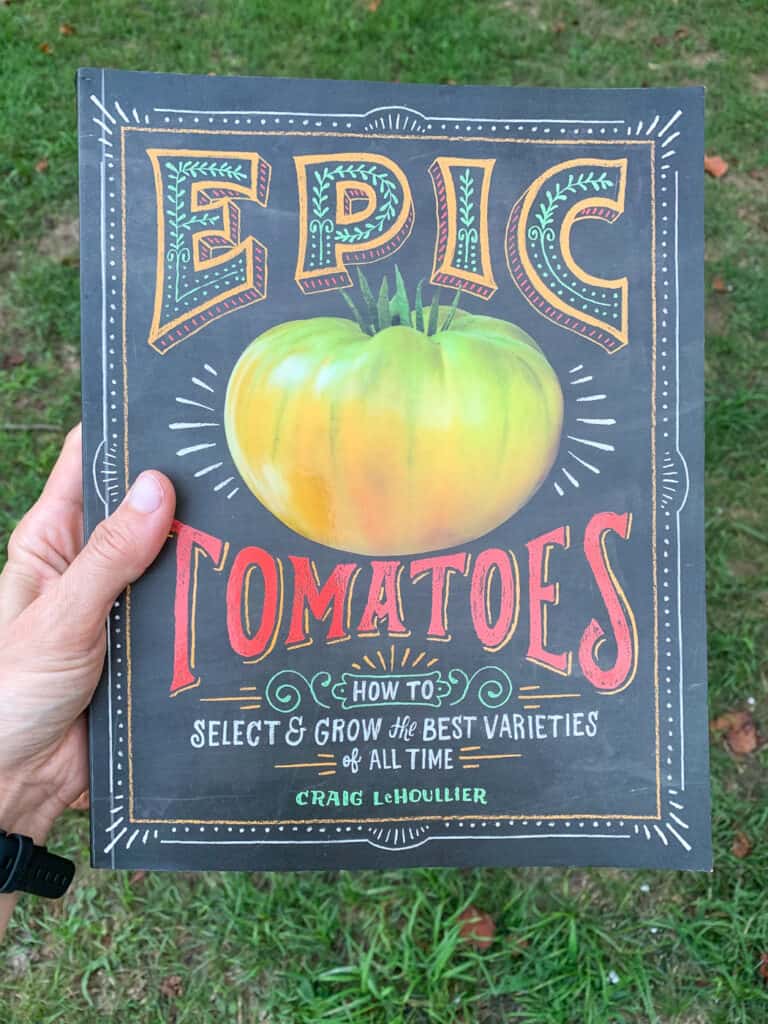
- LeHoullier, Craig (Author)
- English (Publication Language)
- 256 Pages - 12/10/2014 (Publication Date) - Storey Publishing, LLC (Publisher)
Sweet Peppers and Hot Peppers
Peppers are closely related to containers, so it’s no surprise that they are one of the best vegetables for container gardening. They have similar needs to tomatoes. Gardeners in northern regions may have better luck growing peppers in containers than in the ground because they prefer the warmer soil of pots.
Pepper plants are very sensitive to cold weather, so wait to plant them until temperatures are consistently 60-65°F or above. Give them a sunny spot with at least six hours of sun a day (preferable 8-10 or more) to make sure they thrive.
Both types of peppers— hot and sweet — do equally well in pots. Some varieties may need the support of a tomato cage to keep them upright, while more compact cultivars will do fine without. If you have a short growing season, mini bell peppers will ripen more quickly than the standard ones.
Tip: Like tomatoes, peppers need pots that are at least 12” deep, although they tend to have a smaller root system than tomatoes. Buy seedlings or start seeds indoors in late winter.
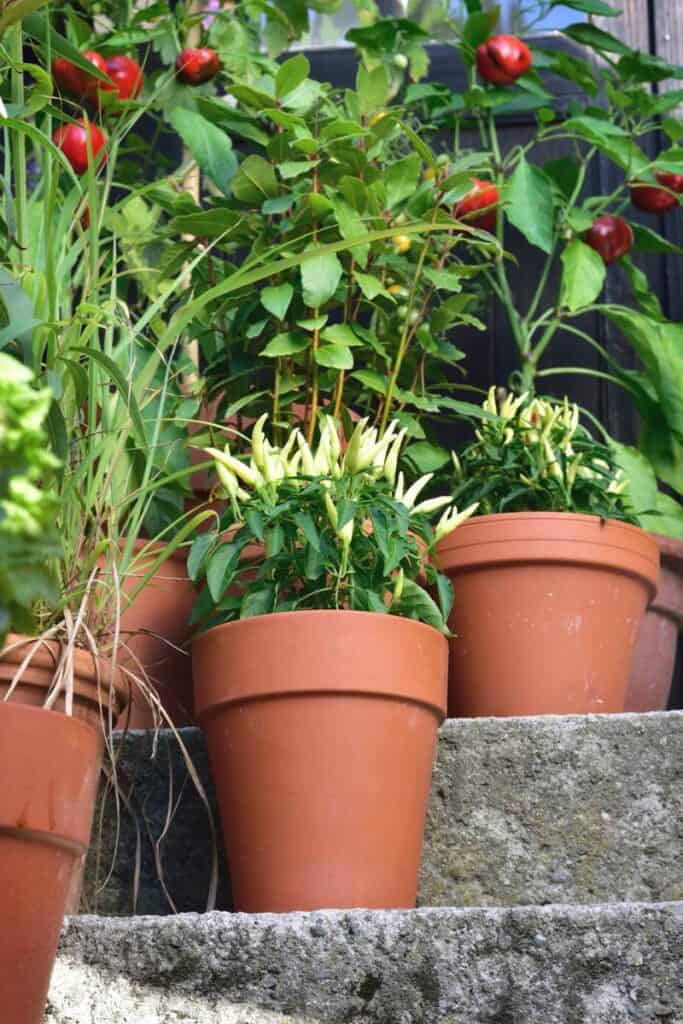
Radishes & Other Root Veggies
You may never have considered growing root vegetables in containers, but they do surprisingly well. By giving them good quality potting soil that’s free of rocks and debris, you can get more perfectly shaped roots than you would growing them in the ground.
Radishes are probably the best root crop to grow in pots. They mature very quickly - in as little as one month! Just be sure to grow them in cool weather, since the plants will bolt in the heat. Radishes and tomatoes were my very first container garden plants when I was a kid. French breakfast radishes are our family's favorite. They grow oblong roots that are perfect for roasting.
Radishes can get spicy, but their taste is mellowed by cooking. Try roasting radishes in the oven with olive oil for a more child-friendly flavor.
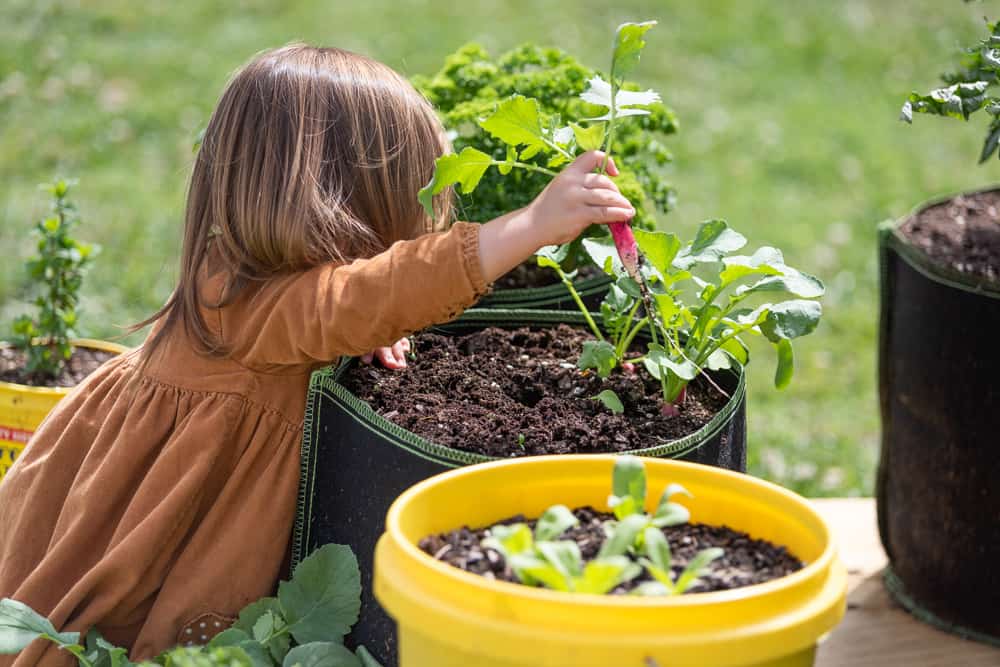
Other root veggies for container gardening include beets, turnips, rutabaga, carrots, parsnips, and onions. Most (except onions) should be sown directly as seeds.
Tip: Choose containers based on the mature size of the root vegetable(s) you are growing. For example, carrots and parsnips will do best in containers that are long and deep. Radishes and beets, on the other hand, have relatively shallow root systems and can be grown in comparatively smaller containers.
Eggplant
Eggplant makes one of the best vegetables for container gardening because the plants grow bushy and upright.As a bonus, the fruits have an ornamental look, which makes them a good choice for a patio or similar entertaining space.
Some varieties of eggplant will get too big for pots, so look for a smaller cultivar. ‘Fairy Tale’ is a compact Asian eggplant that yields long purple and white fruit. ‘Patio Baby’ is very compact and yields traditional dark purple fruit. ‘Gretel’ is a specialty mini white eggplant.
Be sure to place your eggplant in full sun and wait to plant it until the weather has warmed (about the same time as tomatoes and peppers).
Tip: Eggplant gets a fairly large root system, so larger containers are preferred. At minimum, use a 5-gallon container that is at least 12” deep. Go even larger for better yields.
Cucumbers
Cucumbers are fast-growing and can give you a high yield from just one or two plants. This heat-loving vegetable usually does really well in containers where the soil warms quickly as long as you provide enough water throughout the season.
Container cucumbers do try out quickly and need regular watering. In the heat of summer, I sometimes water my container cukes twice a day. Selecting a large container and only growing one plant per container help.
You can choose from bush types or vining types of cucumbers. Bush varieties tend to be more compact and suited to smaller spaces but have lower yields. Vining varieties will need a trellis or be allotted space to spill over the container. Discover more in this guide to growing cucumbers in containers.
Whichever type you choose, place your cucumbers where they will get plenty of sun, planting only after the weather has warmed considerably and there’s no danger of frost.
Tip: Miniature or pickling cucumbers do particularly well in medium-sized pots, but you can get away with growing a standard variety if you use the right container. Large types will need a big, deep container of at least 5 gallons, preferably more. Discover more about growing cucumbers in this guide to growing cucumber in containers.
Potatoes
If you think you need a huge garden plot to grow potatoes, think again. These tubers are one of the best vegetables for container gardening, and harvesting them at the end of the season is as easy as tipping over the pots onto a tarp.
You will, however, need to follow a special method for planting potatoes in pots and use large, deep containers, perhaps something like a clean trash can or old barrel.
Start by placing 6” of good soil (preferably with compost mixed in) into the bottom of your container. Don't have compost? You can buy certified organic compost on Etsy!
Plant your seed potatoes on top and cover with another few inches of soil. Whenever the plants have grown 4-6” tall, cover them with soil until only the top few leaves are sticking out. Continue to let them grow and fill in around them with soil until your containers are full.
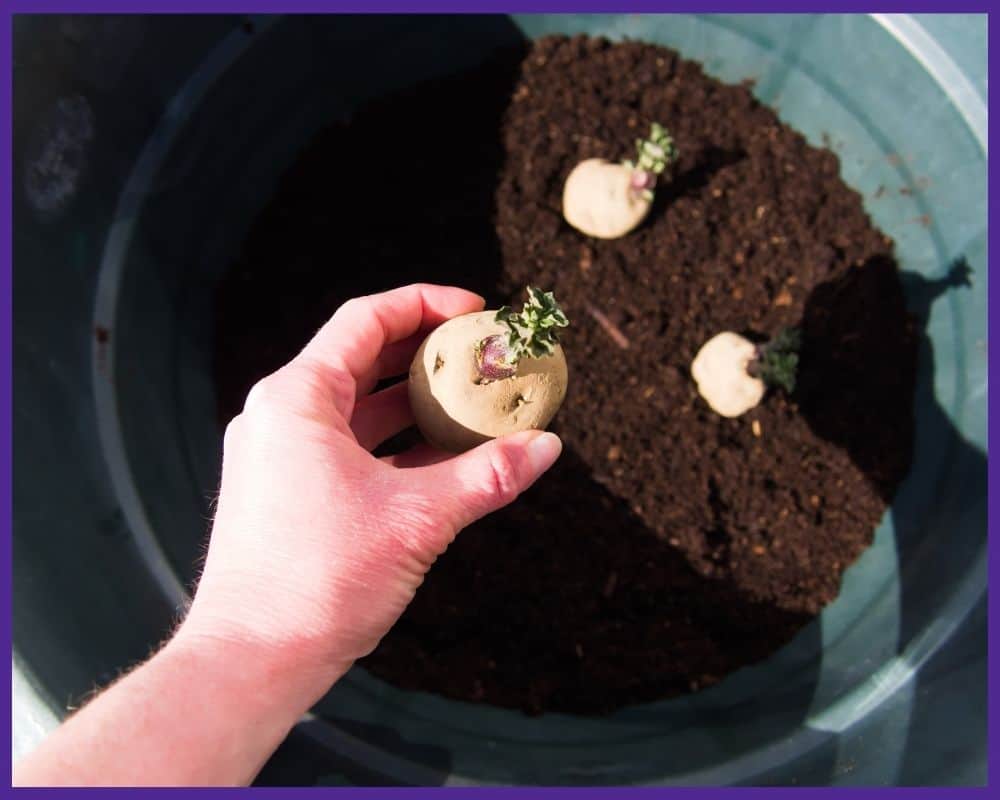
Harvest when the plants die back. Remember that potato leaves are poisonous, and so are any fruits that may form after they flower. For more information on potatoes, be sure to see this guide on when to harvest potatoes.
It may seem like a lot of work for something as simple as a potato, but homegrown potatoes are nothing like what you get at the store.
Although yields are smaller, potatoes can be grown in buckets or bags (5 gallons or larger) instead of trash cans. I'm currently experimenting with growing potatoes in kitty litter buckets. I anticipate getting just a couple of pounds of potatoes per bucket, but it's an easy way to add a calorie-rich staple crop to your container garden. In the photo below, you can see my potato plants just starting to poke out of the soil:
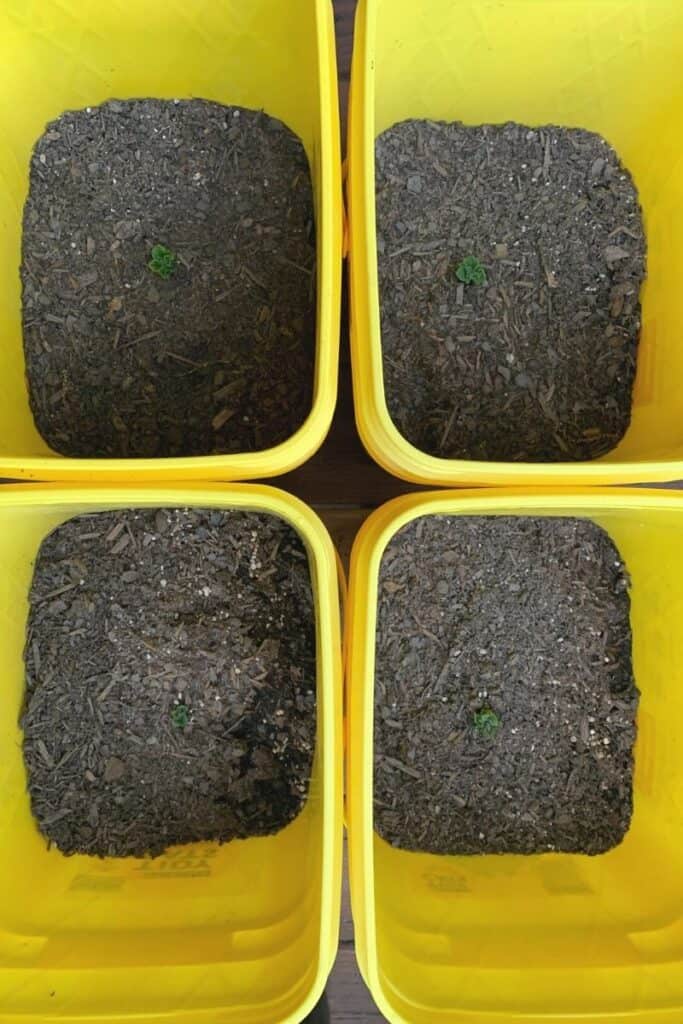
For larger yields, select big grow bags or even trash cans:
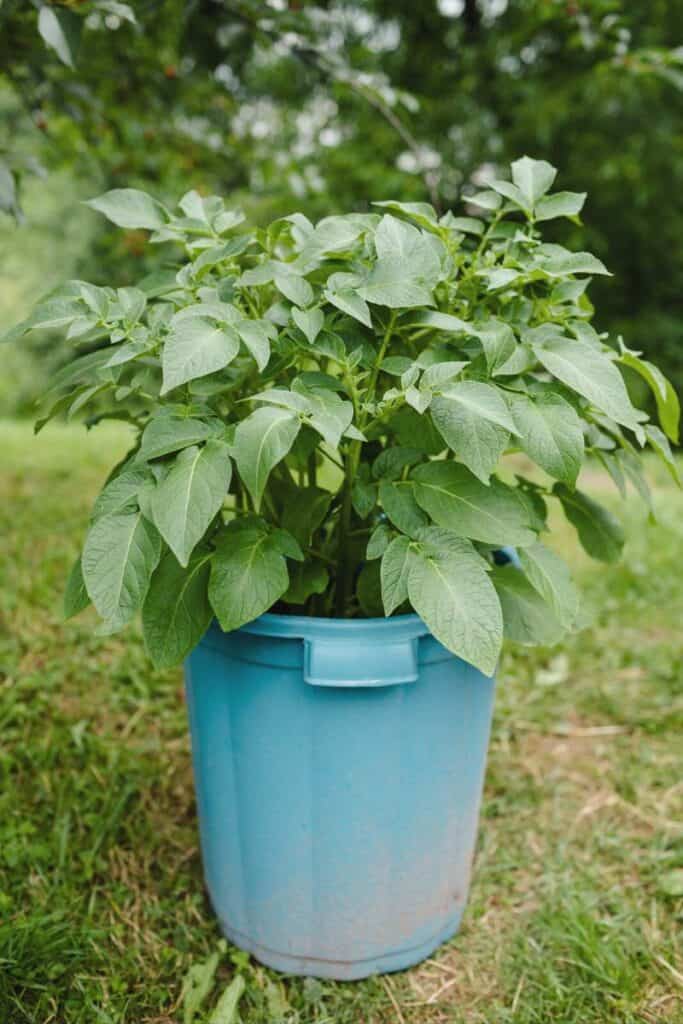
Growing Sweet Potatoes in Containers
Sweet potatoes are not related to "white" or "Irish" potatoes, at all, but they are also a great choice for growing in a large pot. Unlike white potato leaves, sweet potato leaves are edible. Grow your sweet potatoes in a very large container, like a 10 gallon or larger grow bag or cut-off wine barrels.
Beans
You can grow green beans in containers, as long as you grow bush beans or provide support for pole beans.Trellised pole beans are ideal for vertical growing in a patio garden! Virtually all modern green bean varieties have shallow root systems and do well in pots that are just 12" deep.
I regularly grow my favorite bush beans in my Greenstalk grower. I plant 2 or 3 per "cup" in the planter and stack in three tiers high. I've learned that four and five tier towers filled with beans don't do as well because the bottom tiers get inefficient light. The photo below illustrates what I mean:
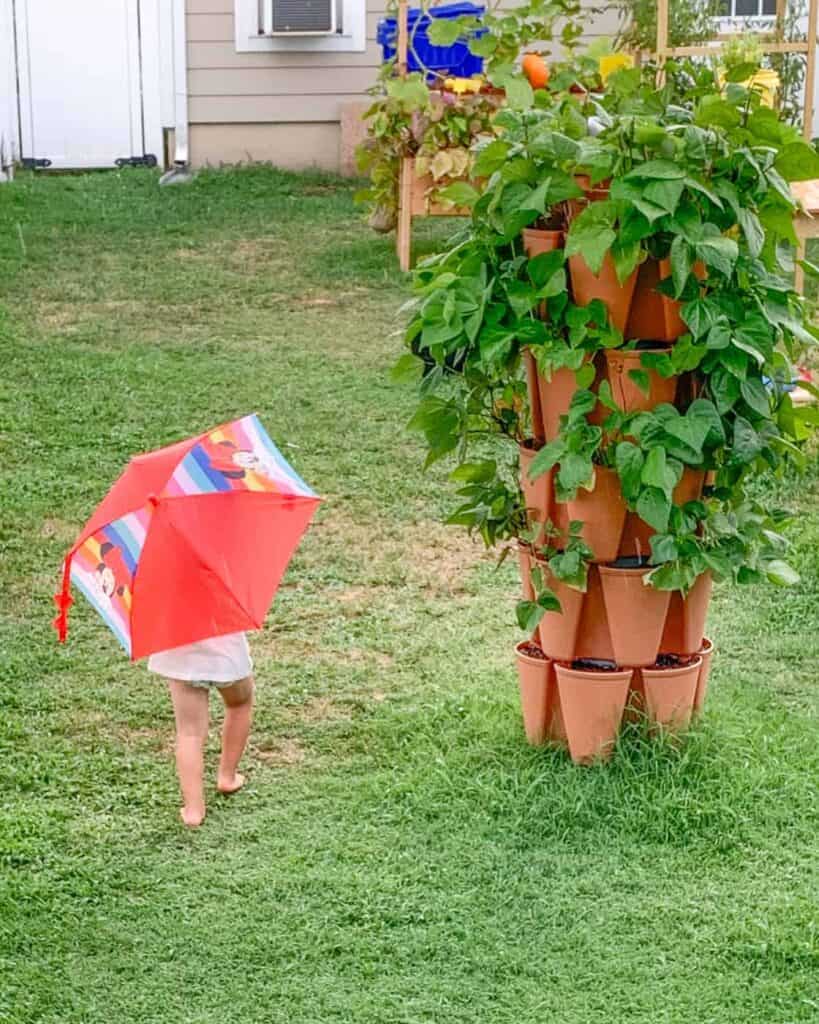
Green Onions
Don't grow a chia pet - grow green onions! Green onions are easy to grow in virtually any size of container. Use them as a cut and come again crop when you trim the tops off leaves or harvest a few leaves but allow the main stem to continue growing.
Tips for Successful Container Gardening
Now that you know the best vegetables for container gardening, here are a few key tips to make your growing season a success:
- Always choose containers with drainage holes in the bottom or drill your own before planting. This protects plant roots from excess water by providing well-drained soil.
- Do not add gravel to the bottom of your containers. This does not improve draining. Adding gravel is an old myth that won't fully go away, even though it makes the soil right above the gravel more soggy and creates conditions prime for rotting roots.
- Be ready to water your containers because the soil in pots dries out more quickly than the soil in the ground. Deep, infrequent waterings that soak the soil are best. Plan ahead and put your garden near a hose or rain barrel!
- If possible, choose a western or southern facing spot for warm-weather vegetables that like full sun. Northern and eastern exposures are better for greens and other cool-weather crops.
- Don’t use garden soil to fill your containers because it will become too compacted and heavy for good root growth. Instead, choose a soilless potting mix and add some compost to it.
- Nutrients leach out of containers every time you water, so for heavy feeders (like tomatoes and peppers), fertilize once or twice a month with compost tea or a liquid organic fertilizer. I usually use Neptune's Harvest.
If you follow these steps and pay attention to the light and temperature needs of each plant, you’ll soon have the best vegetable container garden around!

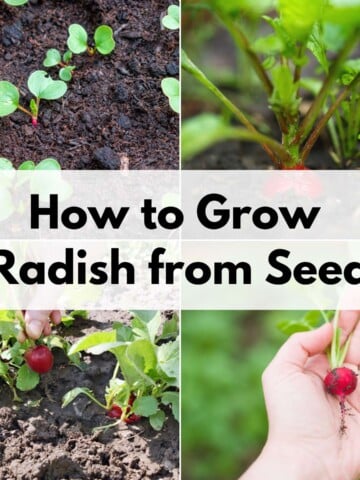
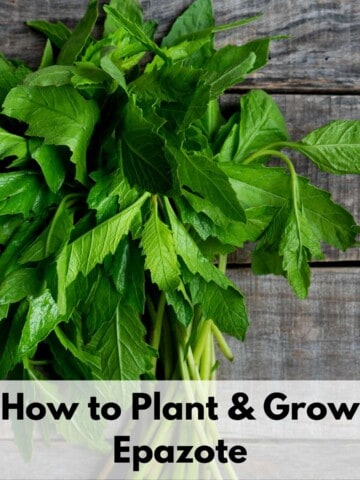
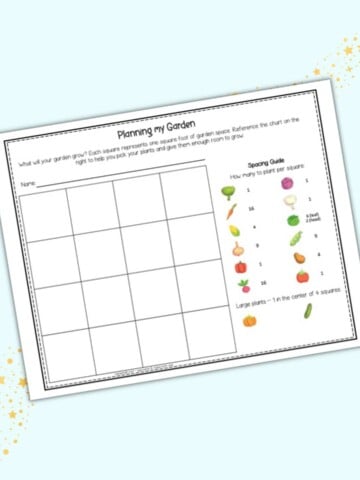
Leave a Reply